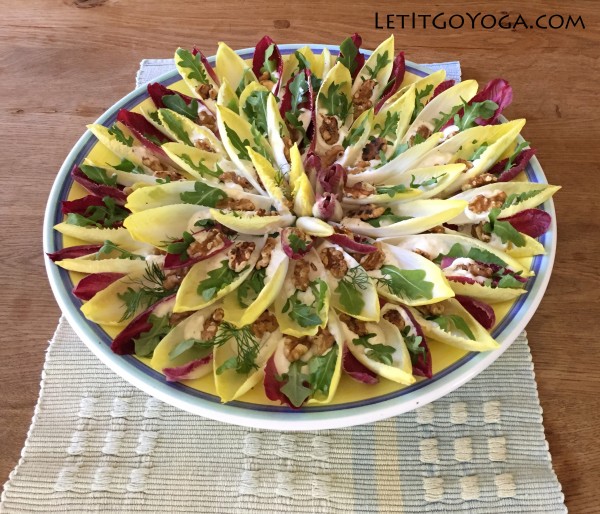Bitter veggies, bitter salads, bitter fruit, bitter drinks… Did your mouth fill with saliva just hearing these words? Well, probably not, as, we do not like bitter tastes, do we?
Culturally and culinary speaking, we just do not appreciate the bitter taste that much – it is the bitter truth (sorry, pun intended, could not help it!) that Western people usually avoid the bitter taste (or try to swap it for perceived “friendlier” tastes, like, salty and sweet). However, as many scientists and dietitians would attest, bitter herbs and foods have important functions in the body, specifically in regards to digestion, detoxification and liver.
“Bitter foods are called bitters because of their taste and action: increasing saliva and stomach acids,” says Taz Bhatia, MD, integrative health expert and author. They may help the stimulation of the digestive system and improve the absorption of food. Additionally, bitters may increase the production of digestive enzymes, which further aids food absorption. Those extra enzymes may also help prevent food malabsorption and leaky gut. And it is true that “…for thousands of years, people have used “bitters” as digestive tonics (which typically include alcohol-based leaves, roots or flowers) to improve digestion after a large meal,” agree Fresh Thyme Farmers Market Dietitians Kerry Clifford, MS, RD and Meghan Sedivy, RD.
Click Here for the Recipe for this Delicious Appetizer
More and more research tells us that our gut health impacts our overall well-being, and that is a great reason to try the bitter foods, too!
So, not to get too “drastic” about those bitter foods, I invite you to try an amazingly tasty appetizer – and “a good-looking finger food” – Belgian Endives with the yogurt-cream cheese and herb mix, topped with a roasted pecan nut or a walnut and either a small arugula leave or a couple of micro green leaves tucked in the creamy mix. See the recipe below.
It is interesting that in general the actual word “endive” is used to refer to the leafy part of any and all of the chicory family plants. The three main types used in cooking are: curly endive (frisée), broad-leaf endive (escarole) and Belgian endive. The Belgian endive, used in this beautiful appetizer, is a form of common chicory, Cichorium intybus, and a different species from the other two endives. Belgian endive can be used in salads and braised or even baked as a side dish. The leaves can be used as dippers or “the edible dish” for small appetizers. A red-colored variety of Belgian endive is known as radicchio. Radicchio is the same species as Belgian endive but has red or variegated leaves. To remove the bitterness (or at least some of it) you can soak the leaves in cold water for some time (and then dry them well).
Pronunciation of the word “endive” is either on-DEEVE or en-DEEVE. I find it entertaining that, apparently, there is a statement by the California Endive Farms, that curly and broad-leaved endive is pronounced en-dive, while Belgian endive has the on-deev pronunciation. But… no matter how you pronounce the word, if you eat it, you will enjoy a healthy snack (and/or appetizer) and it will bring digestive benefits that will make your guts’ micro-biome “sing with happiness”!
And yes, of course, there are other well- known, additional strategies for improving your gut health: eating fermented foods, drinking enough clean water, following a fiber-rich diet, cutting back on sugar and salt (and any/all other excesses), thinking calm and (hopefully) positive thoughts and yes, yes, yes… exercising regularly and practicing meditation and Let It Go Yoga.
So, let’s do it! Let’s make our guts happy!
Contributed by Indra Strong
Photo Credit: Indra Strong
Click Here for the Recipe for this Delicious Appetizer


Leave A Comment